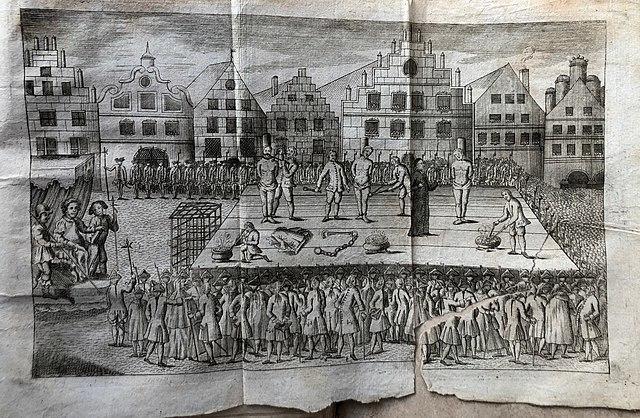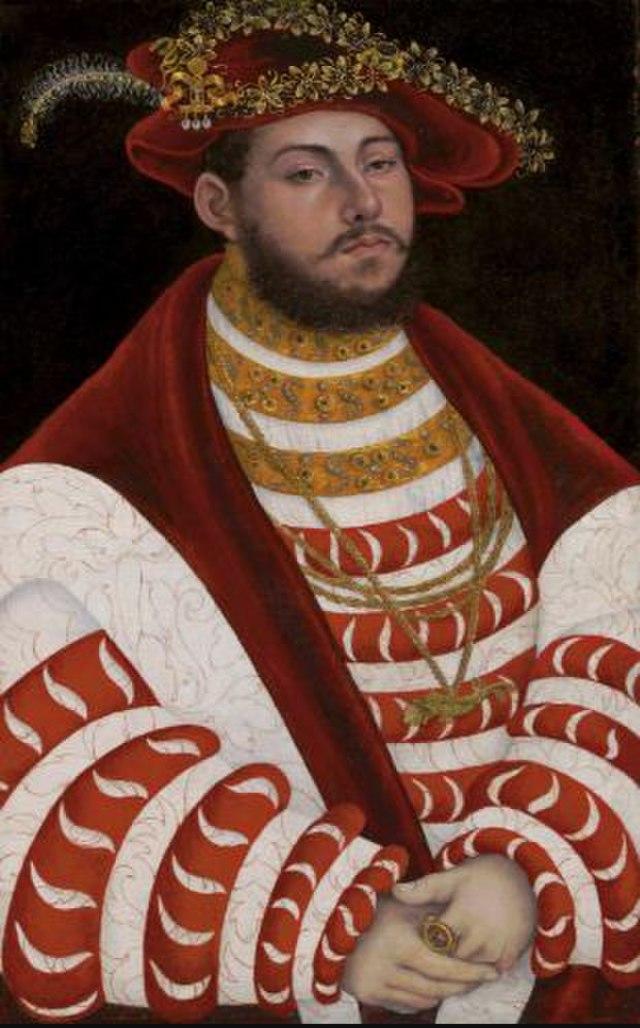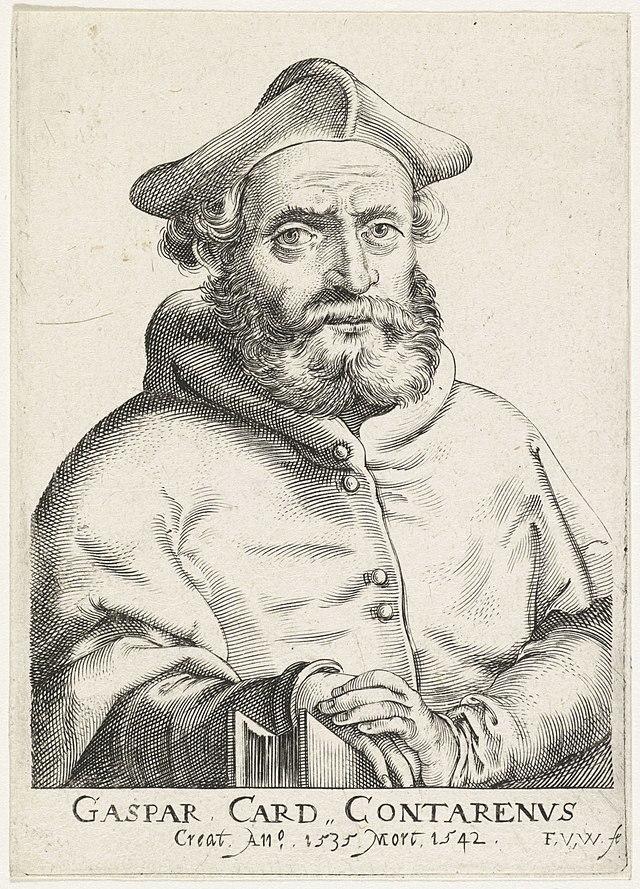Chapters
Officially beginning with Martin Luther's 95 Theses in 1517, the Reformation would continue to grow and evolve throughout Europe into the 1530s.
Once confined to the pages of scholarly debates, the ideas of religious reform had quickly spread across the continent, swaying the hearts and minds of people from all walks of life.
As the 1530s began, the reformation would find itself at an important crossroads - would it continue to gain momentum and ultimately lead to changes within the structure of the church? Or would it be stamped out before its ideas could truly take root?
Below, we’ll take a look into the key developments that occurred during this tense period in history - covering topics like the expansion of Lutheranism, the emergence of the radical Reformation, and the political and religious tensions that defined this era. Keep reading below to find out more!

How did Lutheranism Spread?
In the 1530s, Lutheranism would experience significant growth and expansion throughout much of Europe. At the centre of this movement was the teachings of Martin Luther, which had successfully struck a chord with many who were growing more and more disillusioned with the Church.
Geographically, Lutheranism found fertile ground in the regions of northern and central Germany, where Luther's ideas had first taken root. From there, it soon spread rapidly to neighbouring territories, being carried by the words of merchants, students, and travelling preachers.
By the time the decade had ended, countries as far away as Denmark and Norway had officially adopted Lutheranism as their main religion. Similarly, in central Europe, Lutheran communities were also beginning to pop up as well, especially in Hungary and Transylvania.
But what was the reason behind the rapid spread of Lutheranism? Well, when it came to the nobility, Lutheranism presented a chance to assert independence from the Catholic church and increase political power, while for the common people Luther's ideas around individual faith and the idea of the "priesthood of all believers" were extremely appealing.
Lastly, many of Luther's colleagues and supporters also played a vital role in spreading his message too. For example, a gifted theologian and educator named Philipp Melanchthon worked tirelessly to simplify and spread Luther's teachings far and wide. Melanchthon's knack for making complex theological concepts way more accessible to the average person played a crucial role in the widespread adoption of Lutheranism.
The Reformation rapidly spread across Europe, challenging the Catholic Church's authority and leading to the emergence of radical movements like Anabaptism.

How Did the Radical Reformation Differ from Lutheranism?
The Radical Reformation was essentially a more extreme branch of the Reformation that emerged alongside Lutheranism in the 16th century. While Lutheranism sought to reform the Catholic Church from within, the radical Reformation wanted a complete break from traditional Christianity instead.
For example, one of the most significant radical movements of the time was called Anabaptism, with members of this sect believing that baptism should only be performed on adults who had consciously chosen to follow Christ, rather than on infants.
As a result, these beliefs would put them at odds not only with Catholics but also Lutherans and other Protestant groups who viewed them as dangerous radicals. In the years that followed, Anabaptists faced severe persecution and were routinely imprisoned, tortured or even executed for their beliefs.
However, one of the most dramatic examples of this conflict in beliefs would come with the Munster Rebellion of 1534-1535. During this event, a group of Anabaptist radicals succeeded in taking control of the city of Munster and setting up a community based entirely around their unique religious beliefs.
Led by a man named John of Leiden, the rebels quickly set about abolishing private property, instituting polygamy, and declaring Munster to be the "New Jerusalem" from which Christ would soon return to earth. However, the rebellion would not last long, as Catholic and Lutheran forces would lay siege to the city. After a brutal campaign, the city was eventually retaken, and the leaders of the rebellion were all captured and executed.

Germany's Religious Divide and The Schmalkaldic League
As Lutheranism spread and the radical Reformation took hold, religious tensions in Germany reached a fever pitch. All in all, the country was becoming increasingly divided, with Catholics on one side, and protestants on the other.
As a result, many protestant princes in the realm began to worry about their future due to the actions of Emperor Charles V and his Holy Roman Empire, who were increasingly determined to stop the reformation in its tracks.
In response to these concerns, a group of like-minded Lutheran leaders came together in 1531 in order to form the Schmalkaldic League, which was a defensive alliance whose main goal was to try and protect the rights and interests of Protestants within the empire.
Viewing itself as purely a defensive alliance, the league initially focused only on protecting its members from attack. However, as tensions with Charles V and the Church soured even more, the league eventually changed its stance and set out on a path to actively challenge the authority of the Catholic establishment and advance the cause of the Reformation.
Soon after this, the Schmalkaldic League would grow immensely in strength and influence, attracting new members and forging long-lasting alliances with other protestant powers like Denmark and England. Due to this, the League's leaders, namely John Frederick I of Saxony and Philip of Hesse, became ever more confident in their ability to defend the rights and interests of Protestants within the Holy Roman Empire.
The Schmalkaldic League was a defensive alliance formed in 1531 by Protestant princes in Germany to protect their rights and interests against the actions of Emperor Charles V and the Catholic Church during the Reformation era.

Why was the Diet of Regensburg in 1541 so important?
In 1541, the Holy Roman Emperor Charles V called for a meeting known as the Diet of Regensburg. Seeing how unstable the empire had become due to the growing religious divide between Catholics and Protestants, Charles V hoped that bringing together leading religious scholars from both sides could help find a way to resolve their differences.
For example, amongst those attending were important figures like Phillip Melanchthon who was firmly on the Protestant side, and Cardinal Gasparo Contarini, who spoke for the Catholics. At first, both sides would find some common ground, agreeing on certain aspects of religious doctrine.
However, as the talks continued it became clear that the fundamental differences between the two sides were too great to overcome. From here, this failure would mark a huge turning point in how the emperor approached the protestants, eventually leading to the outbreak of all-out war between the two sides.

Key Takeaways
In conclusion, Europe underwent many religious changes from 1531 to 1541 as the Reformation challenged the Catholic Church's dominance. Lutheranism's rapid spread beyond Germany and the emergence of radical groups like the Anabaptists highlighted the push for deep reforms within Christianity.
Eventually, Protestant leaders would band together in order to create the Schmalkaldic League, further cementing their stand against the Catholic Church. While the Diet of Regensburg in 1541 aimed to heal the growing rift between Protestants and Catholics, it ultimately failed to achieve anything noteworthy. From here, Charles V would intensify his efforts to restore Catholic orthodoxy across his empire, leading to heightened tensions and eventually sparking all-out war.








